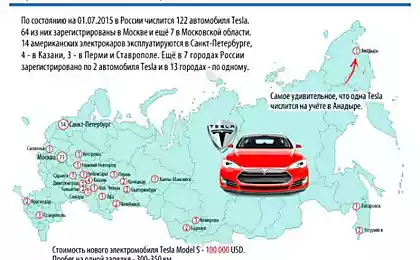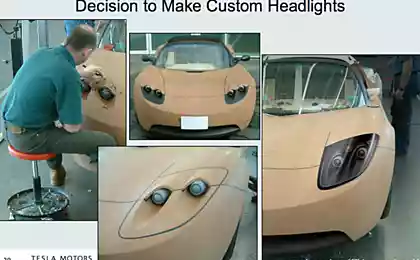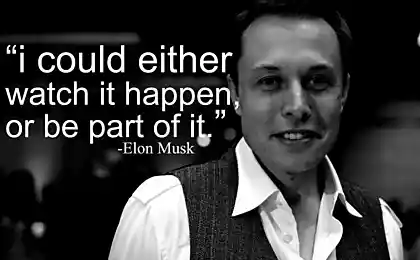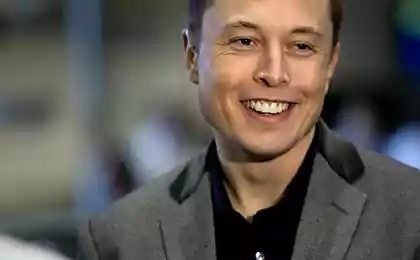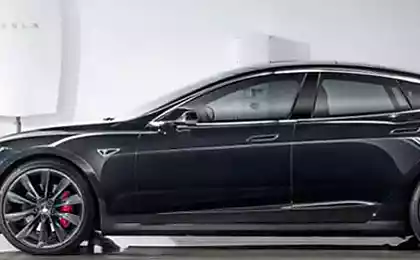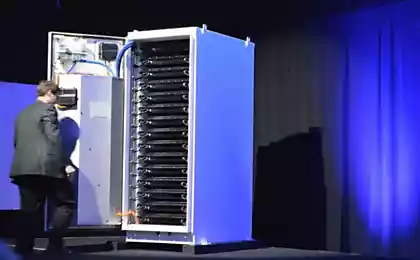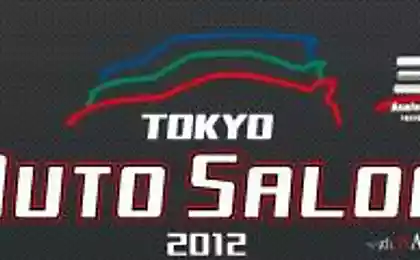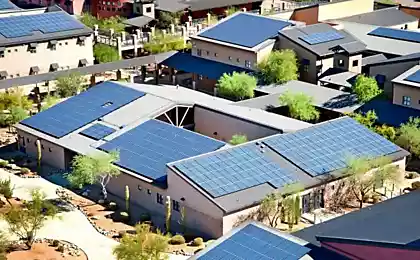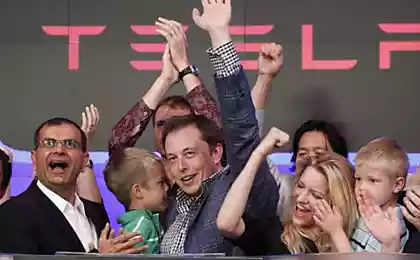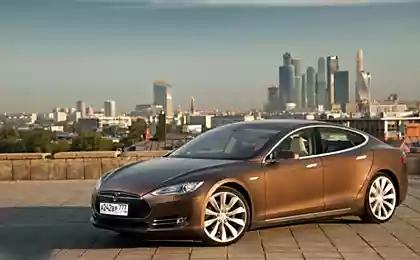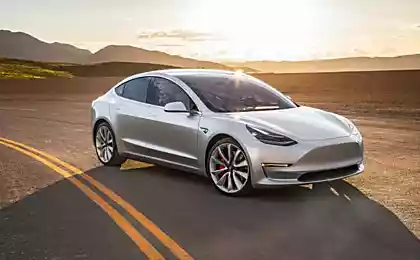713
Toyota vs. Tesla: hydrogen or electricity?
Read the news and understand – today we are witnessing revolutionary changes in the automotive industry. There comes a time of "green" transport – friendly to nature and people. Manufacturers often announce new models that don't need gasoline or diesel fuel. The trends of the future – hydrogen and electricity. The car embodies the future today – vodorodnoi Toyota Mirai and Tesla electric car.
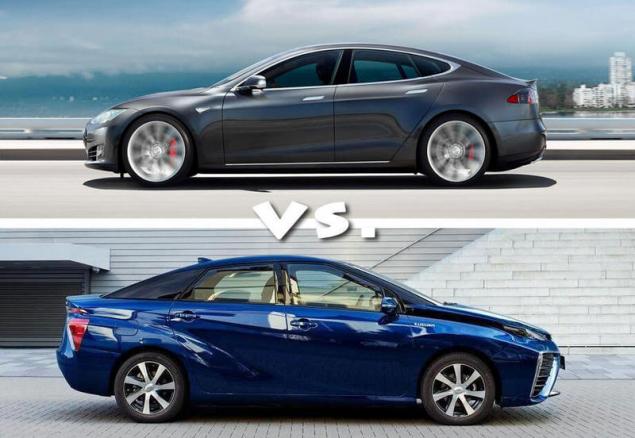
Ones the future, with hydrogen or electricity, we will try today to understand.
Emissionsthe First objective of this transformation is to make the air in our cities cleaner. Still, personal transport one of the main sources of emissions. If the "green" although only passenger cars, the air would be significantly cleaner. Many governments are pushing automakers to make their vehicles less harmful to the environment. Traditional cars on gasoline and diesel fuel are already struggling to comply with new environmental regulations. A series of scandals with understating of indicators of harmful emissions, the so-called "deselect" only confirms that for the production of harmless car you will need to switch to other technologies. In this case, hydrogen and electricity. As is done, for example, one of the largest automakers in the world – Japanese Toyota and not long ago, a small startup from California – Tesla Motors.
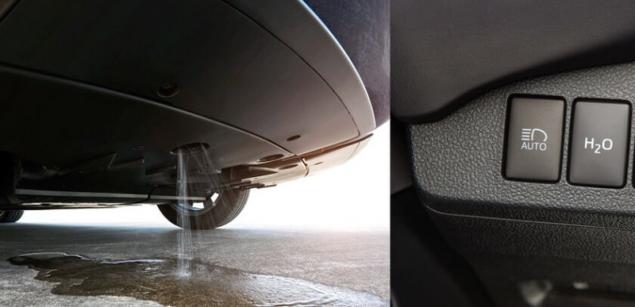
Mirai allows you to drain the water on the road at any chosen premiumdomain hydrogen-fuel cell Mirai from Toyota does not pollute the atmosphere no harmful emissions. Instead of smoke from the exhaust pipe the car just drains formed in the process of joining oxygen and hydrogen water on the road. Electric cars from Tesla, the Model S sedan, Model X crossover and Model 3, the public sector, by definition, have no harmful emissions into the atmosphere. Here the cars are equal.
Toyota – 1:1– Tesla
Environmentally friendly "fuel" But if after the appearance of "green" cars in the air of our cities will be cleaner, something about nature in General is still awaited. And let's start with the hydrogen car.
Hydrogen, of course, is the most abundant element in the Universe. That's just around our planet in large volumes? In the form of useful resources – such as natural gas, oil or nitrogen gas which in most part is our atmosphere? No. The nearest place where there is hydrogen in large volumes is Jupiter. But to get it there, even in a hundred years we won't be able.
There are water. Through electrolysis, hydrogen is extracted from it. But this requires electricity. And in large quantities. And the electricity is produced by burning the fossil fuels – coal, petroleum (oil), natural gas, and this is the way to say 67% of all electricity in the world. As a result, the nature gets its share of harmful emissions from the car, and even earlier in the process of generating electricity. There are, of course, hydroelectric and nuclear power plants, but they only take a certain share in the production of electricity.
Another method of producing hydrogen from hydrocarbons (e.g. methane) is even more harmful to nature. In this case, to produce 1 ton of hydrogen fuel in the atmosphere will have to throw 10 to 30 tons of "greenhouse" CO2 (carbon dioxide).
In the final event of all once again comes down to the use of non-renewable natural raw material, which is combusted not in the internal combustion engine of the vehicle, and the power plant. But the engineers of Toyota have something to say.
Hydrogen is proposed to obtain from the waste products of humans and animals. However upon closer inspection it turns out that we are talking about advanced technology for so-called biogas. Improved it, or at least said this, by extending the process chain. If before the final product was methane, but now it is hydrogen. What side of the substance being released into the atmosphere in hydrogen H2 methane CH4, see above.
Another way is getting electricity for electrolysis from renewable sources – solar, wind, and tides. However, current hydrogen refueling with solar panels in the Toyota has not yet revealed. In contrast, the same Tesla.
Network "Supersupreme" from Tesla powers the car like say in the company, mostly from solar panels. And just like that, the concept of the transport infrastructure of the future where cars are powered by the Sun, not requiring fossil fuels, suggests that Tesla is ahead here.
Toyota – 1:2– Tesla
The range of the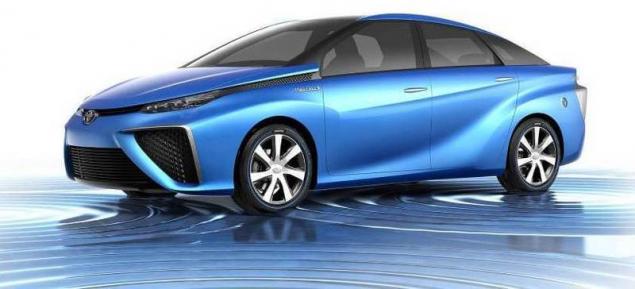
But the number of miles that you can go on one tank from Mirai more. Not surprisingly, hydrogen has high energy intensity. Toyota Mirai produces its fuel cells 114 kWh of electricity. The energy intensity of the lithium batteries Tesla Model S – 60 kWh and 85 kWh. the result of the Model S on a full battery may pass only 434 kilometers on the battery capacity of 85 kWh and 335 miles with 60 kWh whereas Mirai will take its owner on one filling of 502 kilometers. Toyota Mirai to level the scores.
Toyota – 2:2– Tesla
The rate of fillingit is believed that the inability to quickly recharge the battery and was a decisive argument in the choice of Toyota to do it for hydrogen transport. To refuel the Mirai, its owner will spend just three minutes. But with Tesla is not so simple.
There are two versions of "refueling" — automatic battery replacement, it will take about one and a half minutes, and standard battery charging. And in the first case, the owner of the electric vehicle will have to pay about 60-80 dollars. But the charging battery in charging stations for Model S will be free. To charge the battery to half its capacity need only 20 minutes, and up to 80 % for all 40. But the owners of budget Model 3 will have to pay for them, charging the battery will be paid. The Toyota Mirai comes out ahead.
Toyota – 3:2– Tesla
Infrastructure

Clean cars bought, few of them only to advertise. The first of what will face the consumer who buys "green" car is the lack of gas stations. Especially low hydrogen. Mirai is already on sale in Japan and the United States. Sent to the first machine and to the European Union. While among European countries where you can buy hydrogen cars only Germany, Denmark and the UK. Most of all filling stations among European countries was in Germany – eighteen, next Denmark – seven and the UK, where they are still four. By the end of last year the German network had to be expanded to 50 stations, and by 2023 will be equal to four hundred. In Japan last year was to close to 80 stations, and in the States 30. New figures have not yet been reported.
But Tesla operates in very different figures. Today in the world built 646 petrol stations Supercharger. Of them in the USA – 270. Densely covered by stations both the coast and the main section of "Coast to Coast". To drive from the Pacific ocean to the Atlantic in an electric car is easy. In North America refills are in Canada and Mexico. Europe is not far behind – 231 filling station, mainly in Northern Europe, the UK, Switzerland and Germany. But in other countries, the network is expanding rapidly, France, Italy, Croatia already have a wide enough network of filling stations.
In Asia, it is only the Pacific gas stations 126. And that's just China, mainly South-East countries and Japan. Eight stations built in Australia, in Victoria and New South wells. In the middle East, only one country can boast of having charging stations is Jordan – there are three of them.
Don't forget that the Tesla can charge on a normal electric charging stations which are also already quite a lot. You can charge your electric car at home.
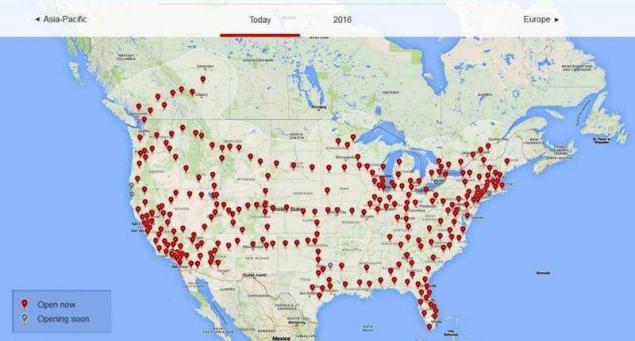
A network of Supercharger stations in Saudaranya car, it would seem home do not charge. But no. And if Toyota while it did not come up, then there is Honda who is also involved in hydrogen transport. Since we're not just talking about Toyota Mirai hydrogen but also cars in General say about it. Hydrogen car Honda FCV will be available to customers already this year. Charge it will. It is a special home system which receives hydrogen fuel from natural gas.
Nevertheless, Tesla in this regard is easier.
Toyota – 3:3– Tesla
Support teamdo Not forget, Tesla and Toyota aren't the only ones involved in the green transport revolution. But to say that global manufacturers are firmly divided into two camps impossible. Many are present here and there. In addition to Toyota are betting on hydrogen, Honda and Nissan, Korean Hyundai, German Daimler, BMW and Volkswagen. Hydrogen-powered Honda FCX, as already mentioned, will go into the series this year. Their concepts cars hydrogen fuel cells has also been demonstrated by other manufacturers. But unlike the two other Japanese companies prefer to invest in the development of a network of hydrogen filling stations, and are in no hurry to launch a series of their concepts.
In the camp of the manufacturers of electric cars except Tesla car manufacturers from all continents – GM,Volvo, Nissan and others. Given the wider network of chargers to run a series of electric cars possible with less risk. The same Hyundai, not leaving camp Ogorodnikov, in March this year unveiled an electric hatchback IONIQ. New series electric cars appear more often. At the end of the year will go into the series the Chevrolet Bolt EV. BMW launches its i3 sitikar from 2013, and this year should appear and i1. Do not forget about the electric version of the RAV4 crossover developed once Toyota in cooperation with Tesla, maybe she'll go back to electric in order to diversify.
Add here and the "new" car, Apple's project "Titan" and LeECO submitted in April, the concept of its first electric vehicle LeSEE their electric cars. But given the "weight" of the automakers and with the other side, and that some rely on both types of "fuel" this is a priority for anyone to give before.
Toyota – 3:3– Tesla
Price
And finally, the price of the environmental issue. The Toyota Mirai is 58 325 dollars in the US and 66 000 euros in the EU, quite expensive, and are comparable with cars of a class "premium". Tesla Model S in the U.S. is sold at a price of 62 85 400 to $ 900 depending on configuration. In Europe from 54 to 73 720 000 euros. The expected price of the Model 3 – $35,000 dollars.
Here only is this price the real price of the car, as the one or the other? Tesla losses for 11 consecutive quarters. Last year, a loss of 889 million dollars. For each Model S sedan has $ 4,000 loss.
Mirai no less unprofitable, the press voiced that the loss of the Toyota one car reach 100,000 euros. It is not surprising that electric cars have long travel on the roads, but hydrogen cars are only now coming into the series.
Sustainability requires design complexity. In relation to Mirai this is particularly accurate. In fact, the hydrogen car from Toyota is the same electric car. Its engine does not use hydrogen directly. Mirai is driven by an electric motor. The necessary electricity is produced in the block hydrogen fuel cells. Besides powering the car and Nickel-metal hydride battery, it is fueled with regenerative braking. The hydrogen is stored under the floor of Toyota in carbon fiber tanks under a pressure of 680 atmospheres. To prove their safety and strength of the company shot tanks from large - and small-caliber weapons. Even at first glance it is evident that such a car may not be cheap. Anyway, in the near future.
Toyota – 3:4– Tesla
Total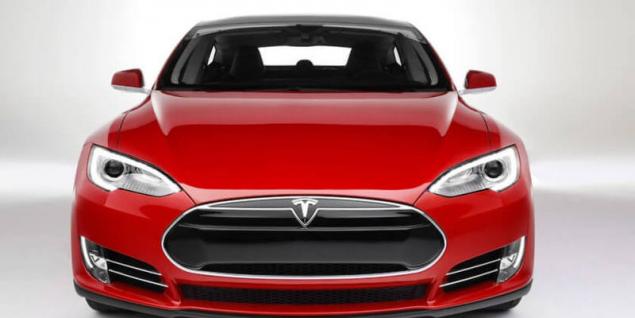
To date, the result seems obvious, electric cars cheaper or at least less unprofitable for a manufacturer, infrastructure is more developed, and fuel is no problem. The future of the rainbow from Tesla all the more impressive to create a world where all cars will be running on solar electricity generated at the charging stations and the fact that it will be free for car owners is very, very tempting. But it will come true?
Cars with hydrogen fuel cells is very complex. Hydrogen in its pure form is effective to obtain not yet where. But still we saw many examples of when the seemingly unsolvable technical problems were solved. This hydrogen transport.
The Result: Toyota – 3:4– Tesla
At the same time, may be after some time we will see on the roads a hydrogen-electric hybrids. There was already a hybrid the Audi A7 Sportback h-tron Quattro, combines a lithium battery and hydrogen fuel cells. A similar concept was the Volvo which has upgraded its electric car the Volvo C30 DRIVe by equipping it with hydrogen fuel cells.
Such hybridization allows, if necessary, increase the cruising range of the car and the charging time, and thereby compensate for the negative aspects of electric cars. Going on a long trip fill the tanks with hydrogen, and ride around the city – use electricity of batteries. So maybe, in the end, everything will end with a compromise.published
P. S. And remember, only by changing their consumption — together we change the world! ©
Source: gagadget.com/22463-toyota-protiv-tesla-vodorod-ili-elektrichestvo-kto-kogo/

Ones the future, with hydrogen or electricity, we will try today to understand.
Emissionsthe First objective of this transformation is to make the air in our cities cleaner. Still, personal transport one of the main sources of emissions. If the "green" although only passenger cars, the air would be significantly cleaner. Many governments are pushing automakers to make their vehicles less harmful to the environment. Traditional cars on gasoline and diesel fuel are already struggling to comply with new environmental regulations. A series of scandals with understating of indicators of harmful emissions, the so-called "deselect" only confirms that for the production of harmless car you will need to switch to other technologies. In this case, hydrogen and electricity. As is done, for example, one of the largest automakers in the world – Japanese Toyota and not long ago, a small startup from California – Tesla Motors.

Mirai allows you to drain the water on the road at any chosen premiumdomain hydrogen-fuel cell Mirai from Toyota does not pollute the atmosphere no harmful emissions. Instead of smoke from the exhaust pipe the car just drains formed in the process of joining oxygen and hydrogen water on the road. Electric cars from Tesla, the Model S sedan, Model X crossover and Model 3, the public sector, by definition, have no harmful emissions into the atmosphere. Here the cars are equal.
Toyota – 1:1– Tesla
Environmentally friendly "fuel" But if after the appearance of "green" cars in the air of our cities will be cleaner, something about nature in General is still awaited. And let's start with the hydrogen car.
Hydrogen, of course, is the most abundant element in the Universe. That's just around our planet in large volumes? In the form of useful resources – such as natural gas, oil or nitrogen gas which in most part is our atmosphere? No. The nearest place where there is hydrogen in large volumes is Jupiter. But to get it there, even in a hundred years we won't be able.
There are water. Through electrolysis, hydrogen is extracted from it. But this requires electricity. And in large quantities. And the electricity is produced by burning the fossil fuels – coal, petroleum (oil), natural gas, and this is the way to say 67% of all electricity in the world. As a result, the nature gets its share of harmful emissions from the car, and even earlier in the process of generating electricity. There are, of course, hydroelectric and nuclear power plants, but they only take a certain share in the production of electricity.
Another method of producing hydrogen from hydrocarbons (e.g. methane) is even more harmful to nature. In this case, to produce 1 ton of hydrogen fuel in the atmosphere will have to throw 10 to 30 tons of "greenhouse" CO2 (carbon dioxide).
In the final event of all once again comes down to the use of non-renewable natural raw material, which is combusted not in the internal combustion engine of the vehicle, and the power plant. But the engineers of Toyota have something to say.
Hydrogen is proposed to obtain from the waste products of humans and animals. However upon closer inspection it turns out that we are talking about advanced technology for so-called biogas. Improved it, or at least said this, by extending the process chain. If before the final product was methane, but now it is hydrogen. What side of the substance being released into the atmosphere in hydrogen H2 methane CH4, see above.
Another way is getting electricity for electrolysis from renewable sources – solar, wind, and tides. However, current hydrogen refueling with solar panels in the Toyota has not yet revealed. In contrast, the same Tesla.
Network "Supersupreme" from Tesla powers the car like say in the company, mostly from solar panels. And just like that, the concept of the transport infrastructure of the future where cars are powered by the Sun, not requiring fossil fuels, suggests that Tesla is ahead here.
Toyota – 1:2– Tesla
The range of the

But the number of miles that you can go on one tank from Mirai more. Not surprisingly, hydrogen has high energy intensity. Toyota Mirai produces its fuel cells 114 kWh of electricity. The energy intensity of the lithium batteries Tesla Model S – 60 kWh and 85 kWh. the result of the Model S on a full battery may pass only 434 kilometers on the battery capacity of 85 kWh and 335 miles with 60 kWh whereas Mirai will take its owner on one filling of 502 kilometers. Toyota Mirai to level the scores.
Toyota – 2:2– Tesla
The rate of fillingit is believed that the inability to quickly recharge the battery and was a decisive argument in the choice of Toyota to do it for hydrogen transport. To refuel the Mirai, its owner will spend just three minutes. But with Tesla is not so simple.
There are two versions of "refueling" — automatic battery replacement, it will take about one and a half minutes, and standard battery charging. And in the first case, the owner of the electric vehicle will have to pay about 60-80 dollars. But the charging battery in charging stations for Model S will be free. To charge the battery to half its capacity need only 20 minutes, and up to 80 % for all 40. But the owners of budget Model 3 will have to pay for them, charging the battery will be paid. The Toyota Mirai comes out ahead.
Toyota – 3:2– Tesla
Infrastructure

Clean cars bought, few of them only to advertise. The first of what will face the consumer who buys "green" car is the lack of gas stations. Especially low hydrogen. Mirai is already on sale in Japan and the United States. Sent to the first machine and to the European Union. While among European countries where you can buy hydrogen cars only Germany, Denmark and the UK. Most of all filling stations among European countries was in Germany – eighteen, next Denmark – seven and the UK, where they are still four. By the end of last year the German network had to be expanded to 50 stations, and by 2023 will be equal to four hundred. In Japan last year was to close to 80 stations, and in the States 30. New figures have not yet been reported.
But Tesla operates in very different figures. Today in the world built 646 petrol stations Supercharger. Of them in the USA – 270. Densely covered by stations both the coast and the main section of "Coast to Coast". To drive from the Pacific ocean to the Atlantic in an electric car is easy. In North America refills are in Canada and Mexico. Europe is not far behind – 231 filling station, mainly in Northern Europe, the UK, Switzerland and Germany. But in other countries, the network is expanding rapidly, France, Italy, Croatia already have a wide enough network of filling stations.
In Asia, it is only the Pacific gas stations 126. And that's just China, mainly South-East countries and Japan. Eight stations built in Australia, in Victoria and New South wells. In the middle East, only one country can boast of having charging stations is Jordan – there are three of them.
Don't forget that the Tesla can charge on a normal electric charging stations which are also already quite a lot. You can charge your electric car at home.

A network of Supercharger stations in Saudaranya car, it would seem home do not charge. But no. And if Toyota while it did not come up, then there is Honda who is also involved in hydrogen transport. Since we're not just talking about Toyota Mirai hydrogen but also cars in General say about it. Hydrogen car Honda FCV will be available to customers already this year. Charge it will. It is a special home system which receives hydrogen fuel from natural gas.
Nevertheless, Tesla in this regard is easier.
Toyota – 3:3– Tesla
Support teamdo Not forget, Tesla and Toyota aren't the only ones involved in the green transport revolution. But to say that global manufacturers are firmly divided into two camps impossible. Many are present here and there. In addition to Toyota are betting on hydrogen, Honda and Nissan, Korean Hyundai, German Daimler, BMW and Volkswagen. Hydrogen-powered Honda FCX, as already mentioned, will go into the series this year. Their concepts cars hydrogen fuel cells has also been demonstrated by other manufacturers. But unlike the two other Japanese companies prefer to invest in the development of a network of hydrogen filling stations, and are in no hurry to launch a series of their concepts.
In the camp of the manufacturers of electric cars except Tesla car manufacturers from all continents – GM,Volvo, Nissan and others. Given the wider network of chargers to run a series of electric cars possible with less risk. The same Hyundai, not leaving camp Ogorodnikov, in March this year unveiled an electric hatchback IONIQ. New series electric cars appear more often. At the end of the year will go into the series the Chevrolet Bolt EV. BMW launches its i3 sitikar from 2013, and this year should appear and i1. Do not forget about the electric version of the RAV4 crossover developed once Toyota in cooperation with Tesla, maybe she'll go back to electric in order to diversify.
Add here and the "new" car, Apple's project "Titan" and LeECO submitted in April, the concept of its first electric vehicle LeSEE their electric cars. But given the "weight" of the automakers and with the other side, and that some rely on both types of "fuel" this is a priority for anyone to give before.
Toyota – 3:3– Tesla
Price

And finally, the price of the environmental issue. The Toyota Mirai is 58 325 dollars in the US and 66 000 euros in the EU, quite expensive, and are comparable with cars of a class "premium". Tesla Model S in the U.S. is sold at a price of 62 85 400 to $ 900 depending on configuration. In Europe from 54 to 73 720 000 euros. The expected price of the Model 3 – $35,000 dollars.
Here only is this price the real price of the car, as the one or the other? Tesla losses for 11 consecutive quarters. Last year, a loss of 889 million dollars. For each Model S sedan has $ 4,000 loss.
Mirai no less unprofitable, the press voiced that the loss of the Toyota one car reach 100,000 euros. It is not surprising that electric cars have long travel on the roads, but hydrogen cars are only now coming into the series.
Sustainability requires design complexity. In relation to Mirai this is particularly accurate. In fact, the hydrogen car from Toyota is the same electric car. Its engine does not use hydrogen directly. Mirai is driven by an electric motor. The necessary electricity is produced in the block hydrogen fuel cells. Besides powering the car and Nickel-metal hydride battery, it is fueled with regenerative braking. The hydrogen is stored under the floor of Toyota in carbon fiber tanks under a pressure of 680 atmospheres. To prove their safety and strength of the company shot tanks from large - and small-caliber weapons. Even at first glance it is evident that such a car may not be cheap. Anyway, in the near future.
Toyota – 3:4– Tesla
Total

To date, the result seems obvious, electric cars cheaper or at least less unprofitable for a manufacturer, infrastructure is more developed, and fuel is no problem. The future of the rainbow from Tesla all the more impressive to create a world where all cars will be running on solar electricity generated at the charging stations and the fact that it will be free for car owners is very, very tempting. But it will come true?
Cars with hydrogen fuel cells is very complex. Hydrogen in its pure form is effective to obtain not yet where. But still we saw many examples of when the seemingly unsolvable technical problems were solved. This hydrogen transport.
The Result: Toyota – 3:4– Tesla
At the same time, may be after some time we will see on the roads a hydrogen-electric hybrids. There was already a hybrid the Audi A7 Sportback h-tron Quattro, combines a lithium battery and hydrogen fuel cells. A similar concept was the Volvo which has upgraded its electric car the Volvo C30 DRIVe by equipping it with hydrogen fuel cells.
Such hybridization allows, if necessary, increase the cruising range of the car and the charging time, and thereby compensate for the negative aspects of electric cars. Going on a long trip fill the tanks with hydrogen, and ride around the city – use electricity of batteries. So maybe, in the end, everything will end with a compromise.published
P. S. And remember, only by changing their consumption — together we change the world! ©
Source: gagadget.com/22463-toyota-protiv-tesla-vodorod-ili-elektrichestvo-kto-kogo/
10 most safest countries in the world
Two small hydropower plants will be built in the Altai mountains
